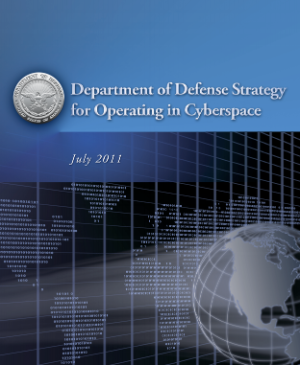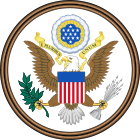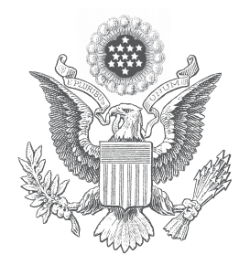Source Doc: Department of Defense Strategy for Operating in Cyberspace
 Last week, I reported that the US Department of Defense had released a highly-anticipated document, entitled, “Department of Defense Strategy for Operating in Cyberspace.† Here is a bit of an overview of the document.
Last week, I reported that the US Department of Defense had released a highly-anticipated document, entitled, “Department of Defense Strategy for Operating in Cyberspace.† Here is a bit of an overview of the document.
The high degree of the Department of Defence’s dependence on cyberspace is abundantly evident:
Along with the rest of the U. S. government, the Department of Defense (DoD) depends on cyberspace to function. It is difficult to overstate this reliance; DoD operates over 15,000 networks and seven million computing devices across hundreds of installations in dozens of countries around the globe. DoD uses cyberspace to enable its military, intelligence, and business operations, including the movement of personnel and material and the command and control of the full spectrum of military operations.
In speaking of the risks the DoD faces in this area, the report states:
Potential U. S. adversaries may seek to exploit, disrupt, deny, and degrade the networks and systems that DoD depends on for its operations. DoD is particularly concerned with three areas of potential adversarial activity: theft or exploitation of data; disruption or denial of access or service that affects the availability of networks, information, or network-enabled resources; and destructive action including corruption, manipulation, or direct activity that threatens to destroy or degrade networks or connected systems.
In response to these concerns, the DoD has outlined five strategic initiatives:
- Strategic Initiative 1: Treat cyberspace as an operational domain to organize, train, and equip so that DoD can take full advantage of cyberspace’s potential
- Strategic Initiative 2: Employ new defense operating concepts to protect DoD networks and systems
- Strategic Initiative 3: Partner with other U. S. government departments and agencies and the private sector to enable a whole-of-government cybersecurity strategy
- Strategic Initiative 4: Build robust relationships with U. S. allies and international partners to strengthen collective cybersecurity
- Strategic Initiative 5: Leverage the nation’s ingenuity through an exceptional cyber workforce and rapid technological innovation
The Department’s five strategic initiatives offer a roadmap for DoD to operate effectively in cyberspace, defend national interests, and achieve national security objectives. Each initiative is distinct, yet necessarily connected with the other four. Across the strategy, activities undertaken in one initiative will contribute to DoD’s strategic thinking and lead to new approaches in the others.
By pursuing the activities in this strategy, DoD will capitalize on the opportunities afforded to the Department by cyberspace; defend DoD networks and systems against intrusions and malicious activity; support efforts to strengthen cybersecurity for interagency, international, and critical industry partners; and develop robust cyberspace capabilities and partnerships. This strategy will guide the Department’s defense of U. S. interests in cyberspace so that the United States and its allies and partners may continue to benefit from the innovations of the information age.
The work the DoD does will inevitably impact the private sector as well. We can only hope that the efforts the DoD exerts will not subjugate the Internet to military rule.







